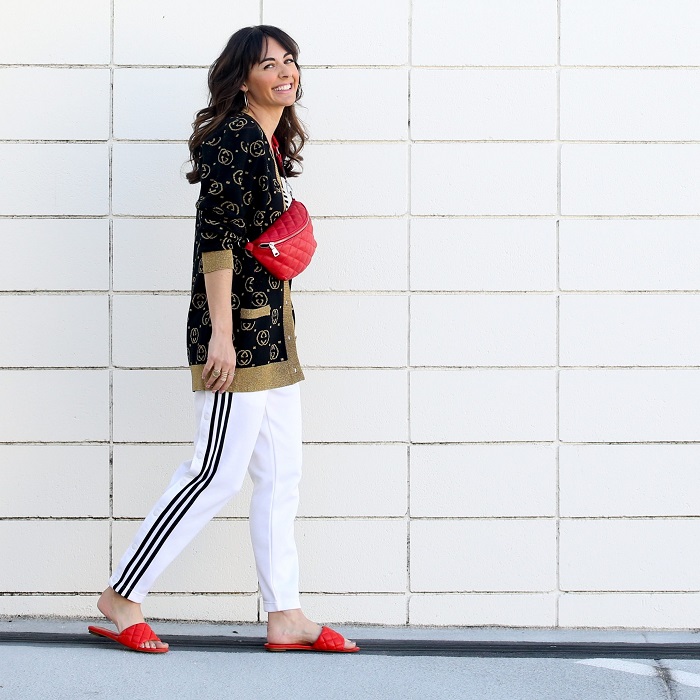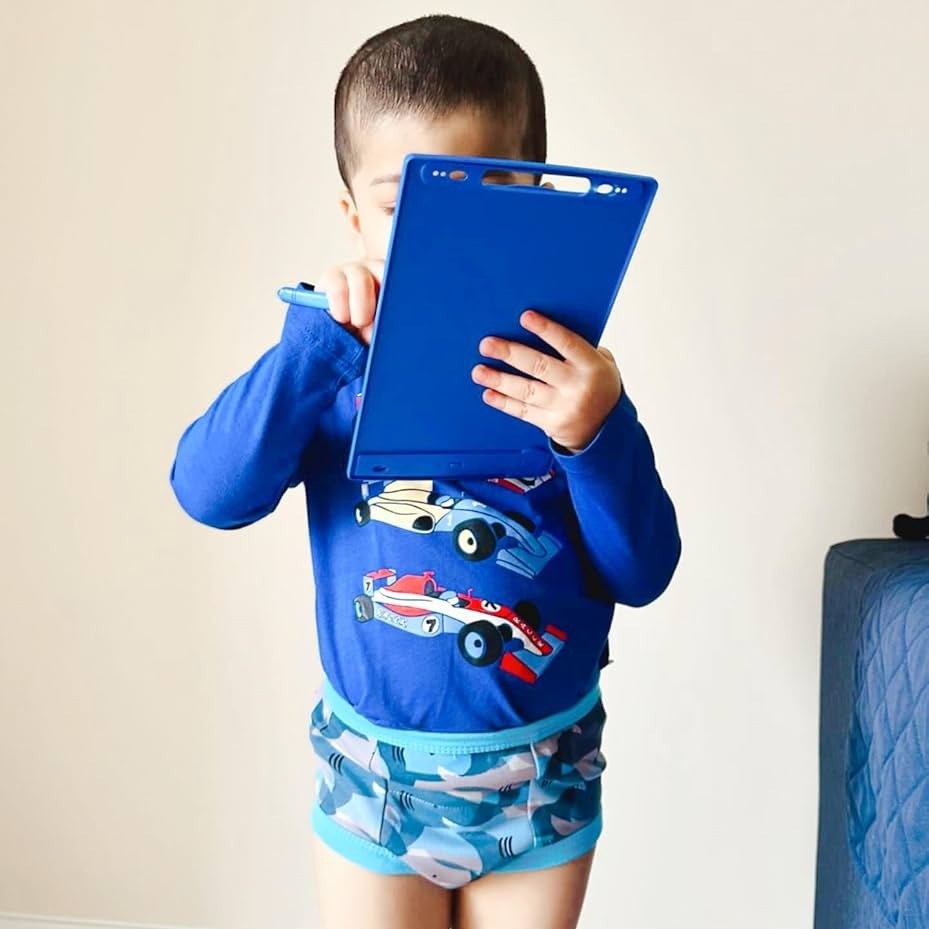Introduction to Baby Training Pants
For many parents, the leap from diapers to fully potty-trained can seem daunting. Baby training pants bridge this gap. They offer a gentle transition for toddlers as they learn the ropes of toilet training. When it’s time to move on from diapers, training pants are an essential step. They encourage independence and provide a sense of comfort to little ones.
Baby training pants are less bulky than diapers. They’re designed to let toddlers feel wetness. This feeling is crucial for them to recognize the need to use the toilet. Unlike diapers, training pants can be pulled up and down by the toddler. This feature aids in teaching them about dressing and undressing themselves.
When looking for baby training pants, keywords like absorbency, comfort, and eco-friendly materials come up. These pants come in various types to suit different needs. From pull-up style pants with elasticated sides to ones with side fastenings for easy removal, the choice is broad.
The baby training pants of 2025 are not just practical. They also come in delightful designs and patterns. These designs make the process fun for toddlers and less stressful for parents. This post will explore the key features to consider, benefits, types, and recommendations. Our goal is to make choosing the right baby training pants simple and clear.
Key Features to Look for in Baby Training Pants
Choosing the right baby training pants involves several key features. These features ensure comfort, convenience, and effectiveness in potty training. Let’s look at what to consider:
- Adjustable Fit: Look for training pants with adjustable sides or waistbands. They should fit snugly without causing marks or discomfort.
- High Absorbency: Absorbency is critical. Good training pants absorb accidents but still let the toddler feel wet. This balance helps in quicker potty training.
- Easy to Change: Pick pants that are easy for you and your toddler to pull up and down. This feature is vital for boosting independence and confidence.
- Tear-away Sides: In case of messy accidents, training pants with tear-away sides can be a lifesaver. They allow for quick and easy changes.
- Soft Materials: Soft, skin-friendly materials will keep your toddler comfortable. They prevent rashes and irritation.
- Leak Protection: Effective leak barriers keep clothes dry. This feature is important for outings and nighttime use.
- Fun Designs: Bright colors and patterns can make training more engaging. Toddlers often enjoy wearing pants with their favorite characters or themes.
Remember these key features when shopping for baby training pants in 2025 to make the transition from diapers smoother for both you and your toddler.
The Benefits of Using Training Pants for Toddlers
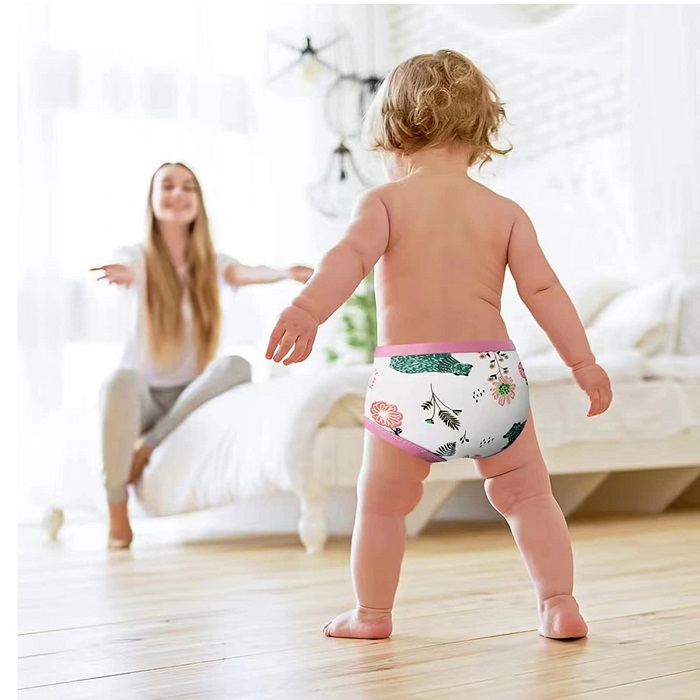
The journey from diapers to potty training is a significant milestone for both toddlers and parents. Transitioning to baby training pants offers several benefits that make this process smoother and more engaging. Here are the main advantages:
- Promotes Independence: Toddlers can pull training pants up and down themselves. This autonomy fosters a sense of achievement and responsibility.
- Enhances Learning: The sensation of wetness is distinct in training pants. It alerts toddlers when they need to head to the toilet, promoting quicker learning.
- Boosts Confidence: Wearing training pants feels like a ‘big kid’ move. It boosts a toddler’s confidence and excitement about potty training.
- Reduces Accidents: Training pants have good absorbency to manage minor accidents. This keeps messes contained and reduces cleanup for parents.
- Eases Transitions: Multiple bathroom visits are easier with training pants. They prepare little ones for regular underwear without overwhelming them.
- Comfortable to Wear: They are softer and less bulky than diapers. Toddlers enjoy more comfort and freedom of movement.
- Supports Overnight Training: With leak protection, nighttime accidents are less disruptive. Parents can worry less about bedding changes in the middle of the night.
- Fun and Attractive Designs: Appealing designs make toddlers enthusiastic about wearing them. This positive attitude helps in the overall training experience.
By considering the benefits, parents can see the value of integrating baby training pants into their child’s development. It’s an investment in their learning journey and comfort during this pivotal growth stage.
Types of Baby Training Pants in 2025
As we approach the mid-2020s, parents have various options for baby training pants. It’s important to understand the different types available. This knowledge can help you make an informed choice for your toddler’s needs. Here’s an overview of the common types:
- Pull-Up Training Pants: These mimic real underwear with elastic bands. They allow toddlers to pull them up and down independently.
- Snap-On Training Pants: Designed with side snaps, these are great for quick changes. They’re helpful during the early stages of potty training.
- Pocket Training Pants: These come with pockets for removable absorbent pads. They are versatile and useful for various stages of toilet learning.
- All-In-One Training Pants: Combining convenience and absorbency, these pants are like regular underwear. They have built-in absorbent layers.
- Organic Training Pants: Made with eco-friendly materials, these are for parents who prioritize sustainability. They are gentle on sensitive skin.
- Nighttime Training Pants: With extra absorbency, these are for overnight use. They help prevent leaks and reduce bedtime changes.
- Swim Training Pants: These are designed for water use. They prevent accidents in the pool and come in fun designs.
Choosing among these types involves considering your child’s comfort, the ease of changes, and where your child is in their potty training journey. Some pants offer more freedom while others provide better leak protection. Fun designs are available across all types, encouraging toddlers in their potty training.
How to Choose the Right Size and Fit
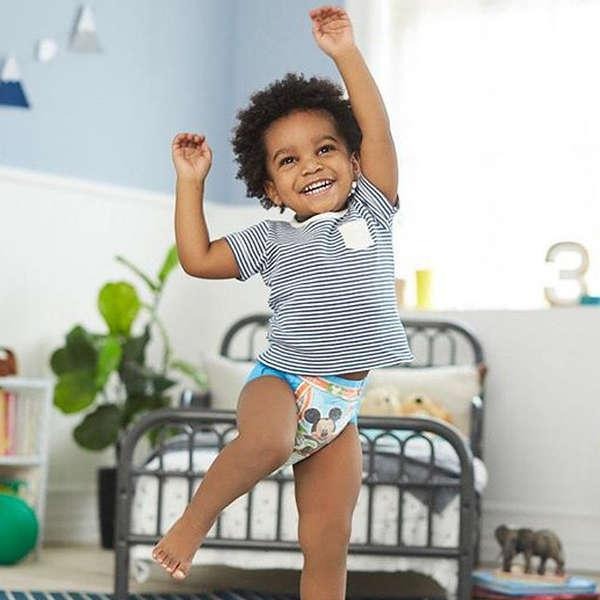
Choosing the right size and fit of baby training pants is crucial. Poorly fitting pants can cause discomfort and leaks. Here are steps to ensure the perfect fit for your toddler:
- Measure Your Toddler’s Waist: Use a soft tape measure to find the waist size. This is the starting point to match the product sizes.
- Check the Weight Range: Most training pants list a suitable weight range. Compare it with your toddler’s weight to narrow down options.
- Look for Adjustable Features: Some pants have adjustable waistbands or sides. These can ensure a snug fit as your toddler grows.
- Consider the Leg Openings: Training pants should fit well around the thighs. Too loose could cause leaks, and too tight could lead to marks or discomfort.
- Opt for Stretchability: Elasticated sides offer comfort and flexibility for moving toddlers.
- Try Different Sizes: If unsure, buy a small pack of two different sizes. Testing them out can tell you which fits better.
- Read Online Reviews: Other parents’ experiences can guide sizing choices.
A well-fitting pair of baby training pants will support your toddler’s potty training journey. It ensures they stay comfortable, confident, and dry. Keep the fit just right to foster a positive toilet training experience.
Understanding Absorbency Levels in Training Pants
Choosing baby training pants isn’t just about size and comfort. Absorbency levels also matter greatly. As parents, you need to find a balance. High absorbency means fewer leaks but may not prompt your child to recognize wetness. Lesser absorbency can increase awareness but might lead to more clean-ups. Here’s how to understand and pick the right level:
- Mild Absorbency: These are lightly padded. They encourage toddlers to feel dampness and learn faster. Use these during the day and when your child starts recognizing the need to go.
- Moderate Absorbency: Good for regular day use. They absorb small accidents while still allowing the sensation of wetness. They’ll keep clothes dry but tell your toddler it’s time for the toilet.
- High Absorbency: Best for night use or long trips. They prevent leaks effectively. However, they might slow down daytime potty training progress. Save these for sleep or travel to avoid disruptions.
- Variable Absorbency: Some training pants come with removable inserts. Adjust absorbency as your toddler’s potty training progresses. Start with more pads and reduce as they gain control.
Consider your daily routine and your child’s potty training stage. Match the absorbency of training pants to your child’s needs. This careful selection supports learning while keeping messes minimal.
The Importance of Eco-Friendly and Skin-Friendly Materials
When selecting baby training pants, one must not overlook materials. Eco-friendly and skin-friendly materials are vital for several reasons. Firstly, toddlers have delicate skin prone to irritation. Eco-friendly materials, such as organic cotton, are gentle and reduce the risk of rashes. Secondly, training pants made from eco-friendly materials are better for the environment. They decompose more easily and reduce the carbon footprint. Finally, using such materials supports sustainable practices in the industry.
Here are some points to consider about materials:
- Gentle on Skin: Pick pants with materials that are soft and hypoallergenic.
- Sustainable: Look for biodegradable or recyclable materials.
- Durable: Even eco-friendly pants should withstand frequent washing.
- Chemical-Free: Avoid substances that may be harmful over time.
- Brand Transparency: Choose brands that disclose their materials and sources.
Parents are becoming more conscious of the products they use for their children. By choosing eco-friendly and skin-friendly materials, you make a choice that benefits your toddler and the planet.
Popular Brands and Customer Recommendations in 2025
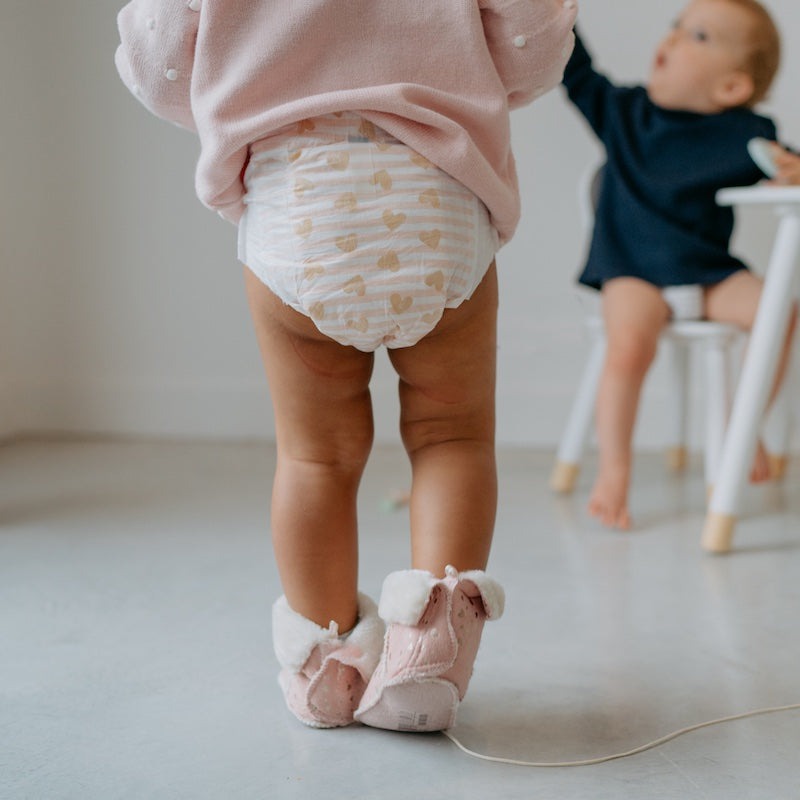
In the year 2025, several brands have emerged as popular choices for parents seeking baby training pants. Their products have been praised for embodying the features and benefits that cater to the needs of toddlers on their journey to becoming potty-trained. By combining user feedback and industry reviews, we have compiled a list of brands that are frequently recommended:
- EcoTots Wraps: Known for their use of organic cotton, these training pants are a hit with eco-conscious parents. They come with fun, educational designs that toddlers love.
- PottyWise Premier: Offering a snug fit with adjustable waistbands, PottyWise is celebrated for its comfort and leak protection.
- SnugFit Adventures: These pants are equipped with tear-away sides, making changes swift and hassle-free. They are perfect for active toddlers.
- SoftHug Delights: The use of hypoallergenic materials makes them a favorite among parents of toddlers with sensitive skin.
- NightGuard Elite: These are the go-to for overnight training, featuring extra absorbency that doesn’t compromise the awareness of wetness.
- SplashSwim Gear: With a focus on swim training pants, this brand ensures fun in the water without accidents.
Customer recommendations often highlight the importance of trying different brands. Each toddler is unique, and what works for one may not work for another. Reading reviews and starting with smaller packs can guide parents toward the best fit for their child. Keep an eye out for seasonal deals and brand trials that allow for experimentation without a significant investment.
In conclusion, the popular brands of 2025 have made it easier for both parents and toddlers alike. With a focus on sustainability and comfort, these brands continue to innovate, ensuring that finding the right pair of baby training pants is a smooth and enjoyable part of the potty training process.
Transitioning from Diapers to Training Pants
Transitioning from diapers to baby training pants is a big step for toddlers and parents. It marks progress in your child’s development. Here’s how to make this transition smooth and stress-free:
- Start Gradually: Don’t rush the change. Introduce training pants slowly alongside diapers.
- Explain the Process: Use simple words to explain the change to your toddler. This helps them understand.
- Encourage Consistency: Once you start using training pants, keep a routine. Consistency aids learning.
- Offer Praise: Celebrate when your toddler uses training pants correctly. Positive reinforcement works wonders.
- Stay Patient: Accidents will happen. Be patient and supportive when they do.
- Keep Diapers for Night: Initially, continue using diapers at night for better sleep.
- Use Fun Designs: Choose training pants with fun designs. They motivate toddlers to wear them.
By following these steps, your child will likely adapt to baby training pants with ease. The goal is to make this change a positive experience. It builds confidence and paves the way for successful potty training.
Conclusion: Making the Right Choice for Your Child
As we wrap up our guide on choosing baby training pants in 2025, remember the journey is unique for every child. The right choice will hinge on being in tune with your child’s comfort, learning stage, and your environmental values. Look for key features like adjustable fit, high absorbency, and skin-friendly materials. Aim for a balance that promotes independence and eases the transition from diapers to potty training. There’s a variety of types to explore, from pull-ups to eco-friendly options. Prioritize a snug fit and the right level of absorbency.
Seek out brands with stellar reviews and customer recommendations like EcoTots Wraps and PottyWise Premier. Customer feedback can offer precious insights. Introduce training pants gradually, maintain a positive attitude, and be patient. Use accidents as learning moments and praise your child’s efforts. For nights, it might be wise to stick with diapers, ensuring restful sleep.
Ultimately, choosing baby training pants is about finding the perfect match for your toddler’s needs. It’s a blend of practicality, eco-consciousness, and comfort. With the right approach, this milestone can be joyful and rewarding for your little one. Empower your toddler with the right training pants, and watch them step confidently into independence.

